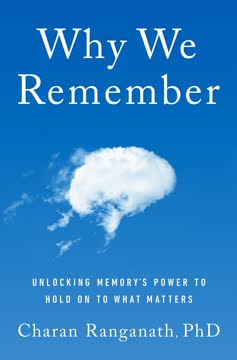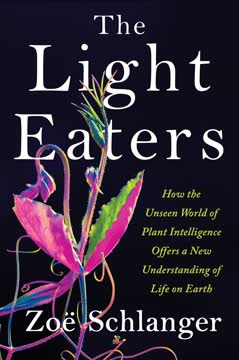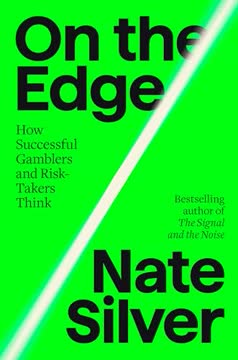نکات کلیدی
1. روش مهندسی: حل مسائل با اطلاعات ناقص
"استفاده از قواعد تجربی برای حل مسائل با اطلاعات ناقص."
قواعد تجربی ضروری هستند. مهندسان به قواعد تجربی یا هورستیکها برای هدایت فرآیند حل مسئله خود تکیه میکنند. این قواعد:
- دانش خاصی را در بر میگیرند (مانند عوامل ایمنی در ساخت و ساز)
- دانش ناگفتهای را که از نسلهای گذشته منتقل شده، به تصویر میکشند
- رویکرد کلی به حل مسئله را راهنمایی میکنند
اطلاعات ناقص، قاعده است. مهندسان اغلب در شرایطی کار میکنند که دادهها یا درک کامل در دسترس نیست. این عدم قطعیت، مهندسی را از علم خالص متمایز میکند و نیاز به استفاده از هورستیکها را ضروری میسازد.
حل مسئله هدف است. هدف روش مهندسی ایجاد راهحلهای عملی است، نه کشف حقایق بنیادی دربارهی طبیعت. این تمرکز بر کاربرد، آن را از روش علمی متمایز میکند و به مهندسان اجازه میدهد حتی در مواجهه با ناشناختهها نتایج قابل توجهی تولید کنند.
2. بهترین راهحلها از تعادل چندین محدودیت به وجود میآیند
"بهترین طراحی مهندسی از juggling صدها محدودیت و پارامترها به وجود میآید که بدون آنها هیچ نسخهای از بهترین وجود ندارد."
بهترین وابسته به زمینه است. در مهندسی، "بهترین" به معنای کامل یا ایدهآل نیست. بلکه به مناسبترین راهحل با توجه به محدودیتها و نیازهای خاص یک وضعیت خاص اشاره دارد.
عوامل متعدد بر طراحی تأثیر میگذارند. مهندسان باید به موارد زیر توجه کنند:
- نیروهای فرهنگی و ارزشهای اجتماعی
- مواد و منابع در دسترس
- محدودیتهای زمانی و فوریت
- عوامل اقتصادی
- تأثیرات زیستمحیطی
مقایسههای بینفرهنگی زمینه را آشکار میکند. با بررسی چگونگی حل مسائل مشابه در فرهنگهای مختلف، میتوانیم ببینیم که چگونه محدودیتها و ارزشهای محلی راهحلهای مهندسی را شکل میدهند. این موضوع اهمیت درک زمینه وسیعتری که مهندسی در آن انجام میشود را نشان میدهد.
3. پذیرش عدم قطعیت: هسته نوآوری مهندسی
"مهندسی به عمق وجود انسان میپردازد."
عدم قطعیت نوآوری را به حرکت درمیآورد. به جای انتظار برای درک کامل، مهندسان راههایی برای کار در اطراف ناشناختهها پیدا میکنند. این توانایی برای ایجاد راهحلها در مواجهه با عدم قطعیت، ویژگی بارز مهندسی است.
رویکردهای پدیدارشناختی کلیدی هستند. مهندسان اغلب پدیدهها را توصیف و طبقهبندی میکنند بدون اینکه به طور کامل علل زیرین آنها را توضیح دهند. این امر اجازه میدهد تا راهحلهای عملی حتی زمانی که درک بنیادی وجود ندارد، ارائه شود.
روشهای احتمالی ریسک را مدیریت میکنند. هنگامی که با رویدادهای شدید یا سیستمهای پیچیده مواجه میشوند، مهندسان از رویکردهای آماری برای پیشبینی نتایج و طراحی بر اساس آن استفاده میکنند. این امر تصمیمگیری مؤثر در شرایط نامشخص را ممکن میسازد.
4. منابع به طور ظریف راهحلهای مهندسی را شکل میدهند
"یک فناوری با خود انتخابها و تعصبات مهندسانی که آن فناوری را ایجاد کردهاند، به همراه دارد."
محدودیتهای مواد بر طراحی تأثیر میگذارند. در دسترس بودن یا کمبود مواد خاص میتواند به طور بنیادی شکل و عملکرد راهحلهای مهندسی را شکل دهد.
منابع انرژی با طراحی در هم تنیدهاند. نوع انرژی در دسترس (مانند بخار، برق، سوختهای فسیلی) اغلب ساختار و عملکرد کلی سیستمهای مهندسی را تعیین میکند.
دانش منبعی حیاتی است. تجربه، مهارتها و درک انباشته شده مهندسان، پایهای اساسی برای نوآوری را تشکیل میدهد. این موضوع اهمیت موارد زیر را نشان میدهد:
- تنوع در تیمهای مهندسی
- حفظ و به اشتراکگذاری دانش در نسلها
- یادگیری و سازگاری مداوم
5. ذهنیت مهندسی: آزمایش، خطا و تعادلها
"روش مهندسی روش علمی نیست، اما به وضوح علم و مهندسی مرتبط هستند."
آزمایش و خطا سیستماتیک است. مهندسان در آزمایشهای تصادفی شرکت نمیکنند. بلکه از شهود، دانش گذشته و ثبت دقیق اطلاعات برای هدایت جستجوی خود برای راهحلهای ممکن استفاده میکنند.
ساخت بر اساس دانش گذشته حیاتی است. مهندسان در این معنا "محافظهکار" هستند که ترجیح میدهند به جای شروع از صفر، به بهبود تدریجی طراحیهای موجود بپردازند. این رویکرد ریسک را کاهش میدهد و بر راهحلهای اثبات شده تکیه میکند.
تعادلها اجتنابناپذیرند. هر طراحی مهندسی شامل تعادل اولویتهای متضاد است. مهندسان باید تصمیم بگیرند که چگونه ویژگیهای مختلف را بهینهسازی کنند و اغلب یک جنبه را برای بهبود جنبه دیگر قربانی میکنند.
6. علم و ریاضیات ابزارهای قدرتمندی برای مهندسان فراهم میکنند
"علم به مهندسان قواعد تجربی بهتری میدهد—قواعدی که مسیرهای غیرمولد را حذف و مسیرهای ثمربخش را پیشنهاد میکنند."
علم مهندسی را آگاه میکند. در حالی که مهندسی صرفاً علم کاربردی نیست، دانش علمی به مهندسان هورستیکهای بهتری میدهد و دامنه راهحلهای ممکن را محدود میکند.
ریاضیات پیشبینی را ممکن میسازد. روشهای آماری و احتمالی به مهندسان این امکان را میدهد که تصمیمات آگاهانهای درباره رویدادهای آینده و رفتار سیستمها بگیرند. این موضوع به ویژه در ارزیابی ریسک و طراحی برای شرایط شدید حیاتی است.
هم علم و هم ریاضیات ابزار هستند، نه هدف. مهندسان از دانش علمی و ریاضی به طور عملی استفاده میکنند، اغلب به شیوههایی که ممکن است استانداردهای سختگیرانه دانشمندان یا ریاضیدانان خالص را برآورده نکند. هدف حل مسائل عملی است، نه کمال نظری.
7. افسانه مخترع تنها و واقعیت تکامل فناوری
"گفتن تنها داستان 'مرد بزرگ'، سهم دیگرانی را که برای توسعه یک فناوری ضروری بودند، پنهان میکند."
نوآوری همکاری است. پیشرفتهای عمده فناوری به ندرت نتیجه کار یک مخترع نابغه است. بلکه این پیشرفتها نتیجه تلاشهای جمعی بسیاری از افراد است و اغلب بر اساس ایدههای موجود بنا میشود.
تولید، اختراع را به حرکت درمیآورد. توانایی تولید انبوه یک فناوری اغلب به اندازه تصور اولیه آن اهمیت دارد. بسیاری از "اختراعات" در واقع نوآوریهایی در فرآیندهای تولید هستند که ایدههای موجود را عملی و قابل دسترس میسازند.
سهمهای نادیده گرفته شده مهم هستند. با بررسی تاریخ کامل توسعه فناوری، اغلب به سهمهای حیاتی از زنان، اقلیتها و دیگرانی که کارشان به طور تاریخی undervalued شده، پی میبریم.
8. مهندسی به عنوان بازتابی از خلاقیت انسانی و ارزشهای فرهنگی
"مهندسی یک حرفه خلاق است که از تمام تلاشهای انسانی دیگر فراتر میرود و به عنوان نمایشی از انعطافپذیری فوقالعاده ذهن انسان به شمار میآید."
مهندسی عمیقاً انسانی است. تمایل به خلق و حل مسائل، جنبهای بنیادی از طبیعت انسان است که در طول تاریخ و در فرهنگهای مختلف مشهود است.
زمینه فرهنگی فناوری را شکل میدهد. راهحلهای مهندسی بازتابدهنده ارزشها، نیازها و محدودیتهای جوامعی هستند که آنها را تولید میکنند. این میتواند منجر به نوآوریهای مثبت و تعصبات مشکلساز شود.
ملاحظات اخلاقی حیاتی هستند. همانطور که مهندسان دنیای اطراف ما را شکل میدهند، باید با پیامدهای اخلاقی کار خود دست و پنجه نرم کنند. درک روش مهندسی به جامعه این امکان را میدهد که در مورد توسعه فناوری و پیامدهای آن بحثهای معناداری داشته باشد.
آخرین بهروزرسانی::
FAQ
What is The Things We Make by Bill Hammack about?
- Exploration of engineering method: The book delves into the unique mindset and approach engineers use to solve problems, emphasizing creativity, flexibility, and working with incomplete information.
- Historical and modern examples: Hammack illustrates his points with stories ranging from medieval cathedrals to soda cans, showing how engineering has shaped the world across eras and cultures.
- Contrast with science: The narrative distinguishes engineering from science, highlighting that engineering is about creating solutions, not just discovering knowledge.
- Demystifying technology: The book aims to reveal the invisible processes behind everyday inventions, helping readers understand how technology is developed and used.
Why should I read The Things We Make by Bill Hammack?
- Demystifies engineering: The book uncovers the hidden creativity and complexity behind engineering achievements, challenging common myths about invention and innovation.
- Informs technological understanding: Readers gain insight into how technologies evolve, the societal and cultural factors at play, and the importance of diverse perspectives in engineering.
- Empowers critical thinking: Understanding the engineering method equips readers to critically assess technological progress and its ethical implications.
- Accessible and engaging: Hammack’s storytelling makes complex concepts approachable, making it valuable for both technical and non-technical audiences.
What are the key takeaways and themes from The Things We Make by Bill Hammack?
- Engineering as creative problem-solving: Engineering is a pragmatic, iterative process that uses heuristics to address real-world challenges under uncertainty.
- Best is context-dependent: Solutions are judged by how well they fit cultural, material, and societal contexts, not by universal standards.
- Human and ethical dimension: Engineering reflects human values and biases, highlighting the need for diversity and ethical reflection in technological development.
- Science and math as tools: While science and mathematics provide powerful heuristics, they do not replace the creative, adaptive nature of engineering.
- Societal empowerment: Demystifying engineering enables society to better engage with and guide technological change.
How does Bill Hammack define the engineering method in The Things We Make?
- Rules of thumb at the core: The engineering method is defined as “solving problems using rules of thumb that cause the best change in a poorly understood situation using available resources.”
- Embracing uncertainty: It is a flexible, creative approach that works with incomplete information, rather than waiting for full scientific understanding.
- Mindset, not a process: Hammack describes it as an attitude or mindset, where engineers combine heuristics and adapt to context.
- Distinct from science: Unlike the scientific method, the engineering method is not a fixed sequence of steps but a pragmatic, context-driven approach.
How does The Things We Make by Bill Hammack distinguish engineering from science?
- Different goals: Science seeks to uncover universal truths, while engineering aims to create specific, workable solutions to real-world problems.
- Methodological differences: The scientific method follows a prescribed process, whereas the engineering method is flexible and relies on heuristics and trade-offs.
- Coexistence of rules: Engineering rules of thumb can coexist and be applied pragmatically, even as scientific theories evolve or are replaced.
- Examples in practice: The book uses examples like medieval cathedrals and the steam turbine to illustrate how engineering operates independently of complete scientific knowledge.
What role do "rules of thumb" play in the engineering method according to The Things We Make?
- Heuristics as shortcuts: Rules of thumb are experience-based, imprecise guidelines that help engineers solve problems efficiently when full information is lacking.
- Three classes of rules: These include encapsulated knowledge (like safety factors), traditional or unarticulated knowledge (like recipes), and problem-solving strategies (like “freeze the design”).
- Context-dependent and flexible: Rules of thumb are judged by their effectiveness in context, not by absolute correctness, and can even contradict each other.
- Foundation of engineering: They are essential for navigating uncertainty and making progress when scientific certainty is unavailable.
What are the three key strategies of the engineering mindset in The Things We Make by Bill Hammack?
- Trial and error: Systematic experimentation, guided by intuition and record-keeping, allows engineers to explore design spaces and learn from failures.
- Building on past knowledge: Engineers use institutional memory, historical insights, and established heuristics to avoid reinventing the wheel and to guide problem-solving.
- Accepting trade-offs: Engineering involves balancing conflicting goals and constraints to find the best compromise for a given context.
- Iterative improvement: These strategies collectively enable engineers to refine solutions over time, adapting to new challenges and resources.
How does The Things We Make by Bill Hammack explain the concept of "best" in engineering solutions?
- Relative, not absolute: “Best” is defined by how well a solution balances constraints and parameters unique to its cultural, material, and societal context.
- Cross-cultural examples: The book uses cases like Egyptian grape juice extraction and Arawak manioc detoxification to show that “best” varies with available resources and needs.
- Bias and inclusivity: Engineering solutions can reflect cultural biases, such as gender-biased crash test dummies, underscoring the importance of diversity in design.
- Continuous evaluation: What is “best” can change as contexts and available resources evolve.
How does The Things We Make by Bill Hammack illustrate the relationship between science and engineering?
- Science as a source of heuristics: Scientific discoveries provide improved rules of thumb that guide engineering but do not dictate solutions.
- Engineering applies creatively: Engineers use scientific knowledge alongside intuition, trial and error, and practical constraints to create workable solutions.
- Example of steam turbine: Charles Parsons combined scientific data with practical engineering to invent the steam turbine, showing science as a tool, not a blueprint.
- Independence from science: Engineering often advances even when scientific understanding is incomplete or absent.
How does The Things We Make by Bill Hammack describe the role of mathematics in engineering?
- Mathematics as a heuristic tool: Mathematics provides powerful rules of thumb, especially through probability and statistics, rather than exact theorems.
- Risk assessment and prediction: Engineers use statistical methods like extreme value theory to predict rare events and design safe structures.
- Pragmatic application: Mathematical models are used as approximations, acknowledging uncertainty and changing conditions such as climate change.
- Not a substitute for creativity: Mathematics supports, but does not replace, the creative and adaptive aspects of engineering.
What historical examples does The Things We Make by Bill Hammack use to illustrate the engineering method?
- Medieval cathedrals: The construction of Gothic cathedrals without mathematics or science, relying on rules of thumb and templates, exemplifies creative problem-solving.
- O-ring invention: Niels Christensen’s intuitive and trial-and-error approach to inventing the O-ring seal demonstrates practical engineering under uncertainty.
- Josiah Wedgwood’s ceramics: Wedgwood’s systematic experimentation and acceptance of trade-offs in creating jasperware highlight the engineering mindset.
- Steam turbine development: Charles Parsons’s integration of scientific data and practical knowledge showcases the interplay between science and engineering.
How does The Things We Make by Bill Hammack challenge common myths about engineering and invention?
- Myth of the lone inventor: The book shows that invention is a cumulative, collaborative process involving many contributors, not just a single genius.
- Engineering as applied science: Hammack argues that engineering is not merely the application of science, but a creative discipline that thrives on uncertainty.
- Linear progress fallacy: The narrative rejects the idea of a straight path from idea to solution, emphasizing the iterative and complex nature of engineering development.
- Highlighting hidden contributors: The book brings attention to overlooked figures, such as Lewis Latimer in the development of the light bulb, to illustrate the importance of diverse contributions.
What are the best quotes from The Things We Make by Bill Hammack and what do they mean?
- “Engineering is using rules of thumb to solve problems with incomplete information.” This quote encapsulates the core of the engineering method, emphasizing pragmatism and adaptability.
- “Best is not absolute, but relative to context.” Hammack highlights that engineering solutions must fit their specific cultural, material, and societal circumstances.
- “Science provides gold-plated, grade A, supremo rules of thumb.” This phrase illustrates how scientific knowledge enhances, but does not replace, the practical heuristics engineers use.
- “Engineering is more closely related to art than science.” The book argues that engineering, like art, involves creativity, intuition, and working with ambiguity.
- “Demystifying technology empowers society.” Hammack’s message is that understanding how things are made enables people to engage with and shape technological progress responsibly.
نقد و بررسی
کتاب چیزهایی که میسازیم به بررسی جذاب تاریخ و روششناسی مهندسی میپردازد. هَمَک تفاوت بین علم و مهندسی را روشن میکند و اختراعاتی از کلیساهای بزرگ تا مایکروویوها را به نمایش میگذارد. خوانندگان از نوشتار قابل فهم و داستانهای جالب لذت میبرند، هرچند برخی بخشها را بیش از حد فنی یا تکراری مییابند. این کتاب به چالش میکشد تصورات نادرست رایج درباره مخترعان تنها و بر اهمیت تلاشهای گروهی تأکید میکند. در حالی که به خاطر بینشهایش در مورد تفکر مهندسی ستایش میشود، برخی منتقدان به موضع هَمَک در مورد مهندسی در مقابل علم و نحوه برخوردش با مسائل اجتماعی در طراحی انتقاد میکنند.
Similar Books









